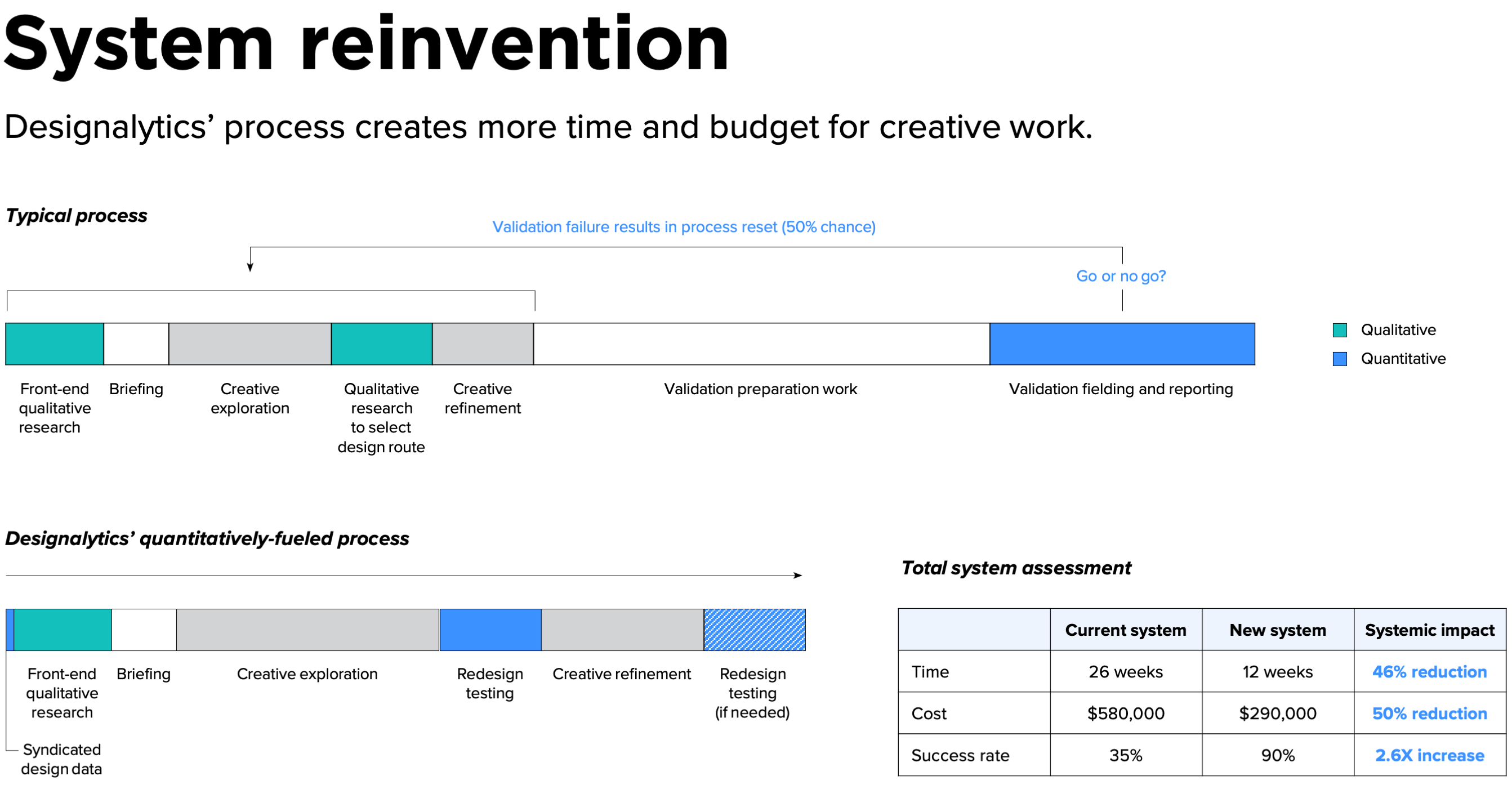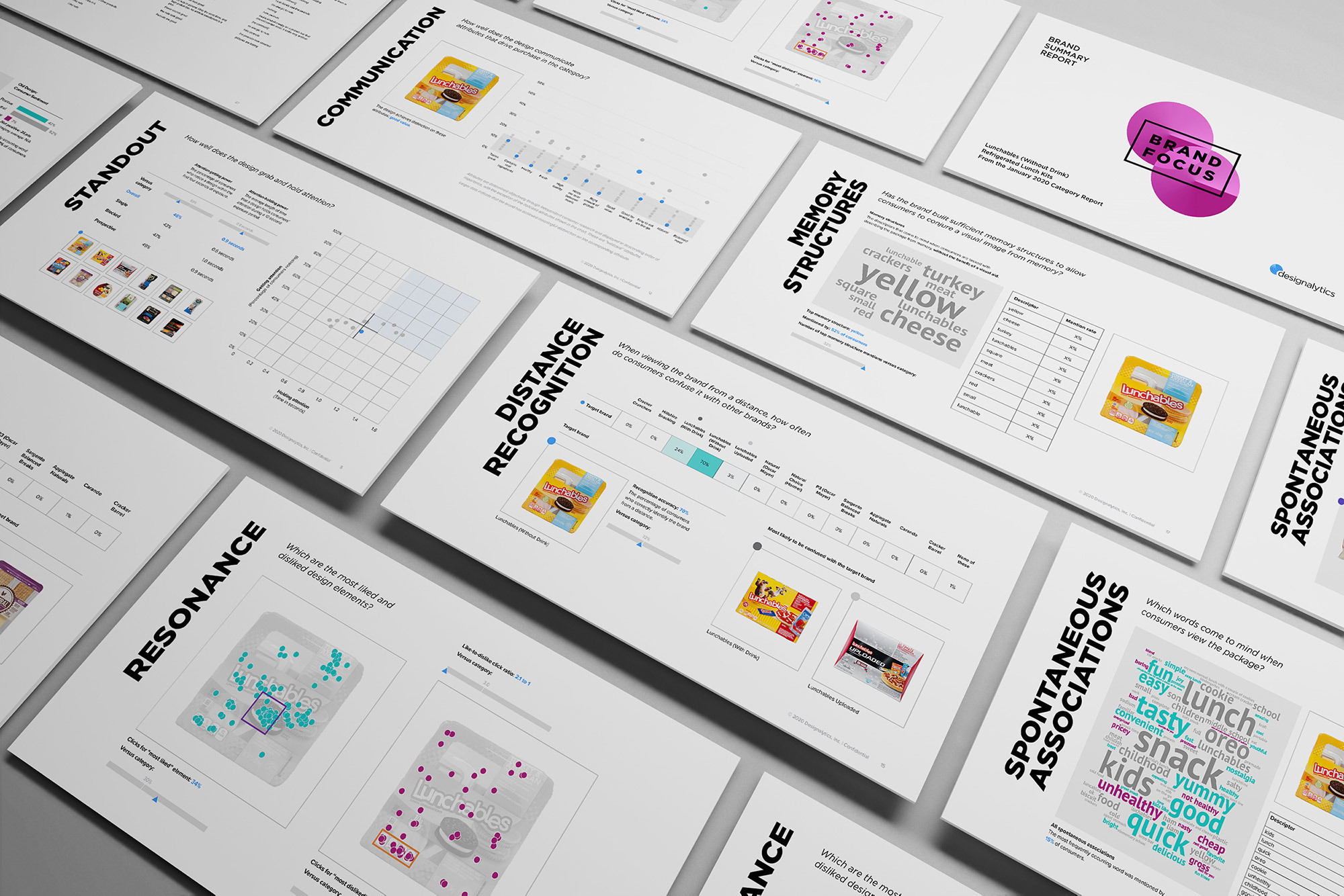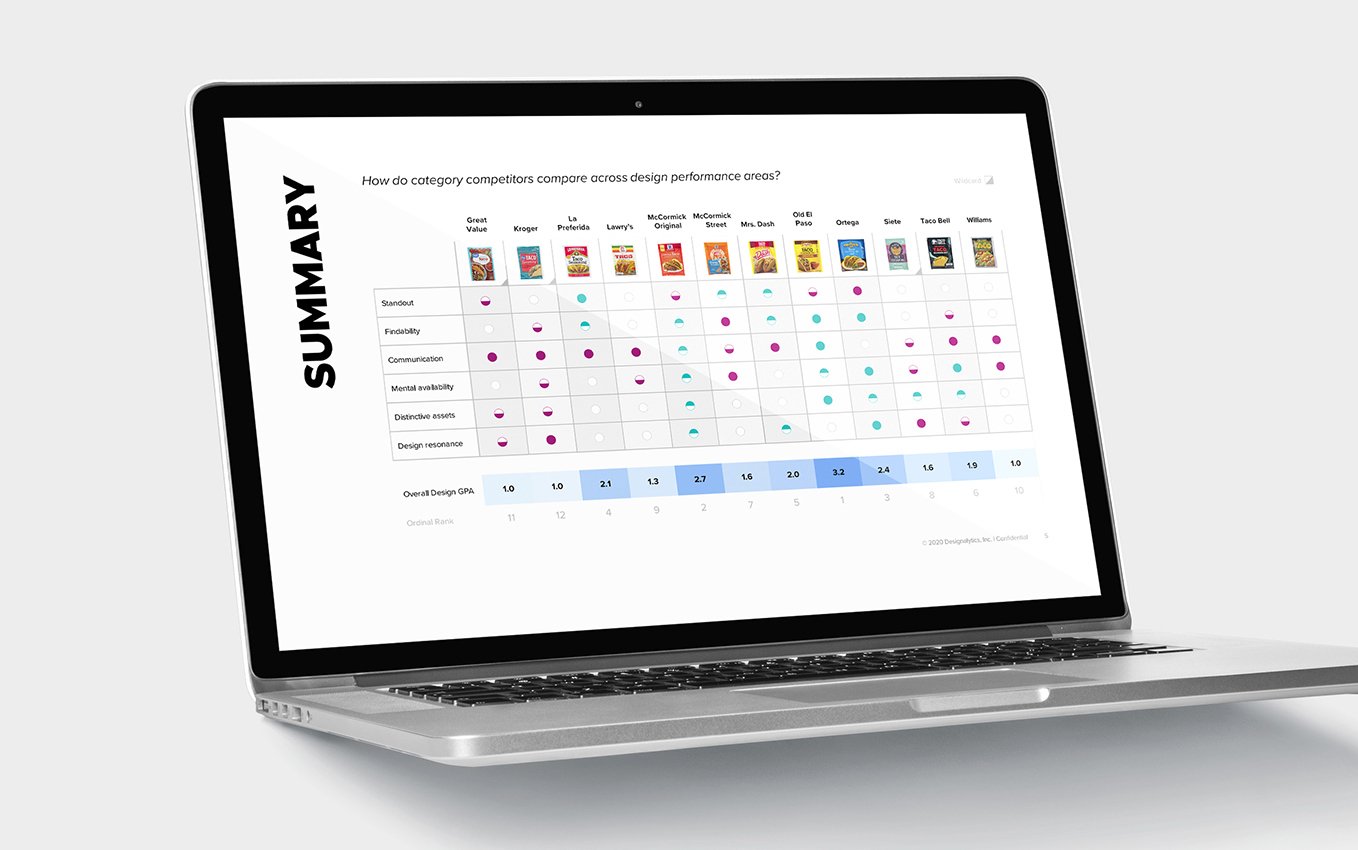In consumer-packaged-goods (CPG) companies all over the country, marketing activities are, right now, being assiduously managed and obsessively tracked. People are spending time poring over reports and data to ensure that each aspect of the marketing mix—from broadcast and digital ads to promotions and social media—is offering a robust return on investment. All of them…. Except, likely, one.
Package design.
For years, brands were under the mistaken impression that design didn’t have much of an impact on sales. The truth is: The issue with design has never been a lack of impact; it’s been a lack of measurement. And in order to properly measure your package design, you need a baseline—both for how your design currently performs and how it compares to others in your category. That’s why we offer syndicated design research.
So what is syndicated research?
It’s essentially package design intelligence—offering insights you’d never see otherwise—that you can leverage to grow your brand. Designalytics annually evaluates 12 brands in a given product category across a wide range of CPG categories, offering in-depth data and analysis from 20+ performance factor metrics (including the ones we have determined are the most important for design success).
This is a treasure trove of actionable data. CPG brands are not used to having access to such a wealth of design insights (we’re the first in the industry to offer it), so it helps to understand when and how brands are currently utilizing it. For one thing, our clients have found that…
Syndicated research is most effective before the design process starts. And wow, is it effective.
Traditionally, brands have only received quantitative data at the end of the creative process in order to validate a chosen design direction—when it can do them little good. When applied to the existing design, that data could be a valuable input to the process, informing and improving the creative strategy, but it’s not typically used that way.
Hindsight may be 20/20, but it doesn’t do much for your bottom line. Getting robust, 360-degree feedback on your current package design before you make decisions about a redesign can make a major difference.
The chart below shows how Designalytics’ system differs from a typical process that has woefully underestimated design’s impact and squandered the revenue-boosting opportunities it offers. As you can see, utilizing syndicated data not only saves time and resources—it has a success rate that is nearly triple the current system’s.

It’s clear that getting the right information at the right time can be a game-changer. The next question is: How does syndicated research actually help brands grow? For starters, it helps brands to...
Know when to change a design—and when not to.
Did you know that two-thirds of brand redesigns fail to create positive business outcomes? And 42% actually lead to negative ones. The reason could be poor execution, of course, but it can also be more straightforward: The brand simply didn’t need to redesign in the first place.
Often, a competitor's new attention-grabbing package, or a sense that the brand is “due” for a redesign, may create an institutional itch for a new look. Without actual data to say otherwise, subjective speculation like this can be compelling… but it can also increase risks for your brand.
Here’s an example: Through our syndicated research, you could find that your brand already has a high-performing design. This is great news, and it also provides important context. Great designs are harder to improve upon, so making changes carries a higher risk of producing sales losses. This problem is magnified if you, lacking an objective baseline read, don't know there is a high bar to begin with.You could easily be setting your brand up for failure.
Syndicated data allows you to evaluate the health of your design prior to embarking on a potentially expensive, time-consuming design initiative. Sometimes, a redesign is not warranted at all. If one is called for, our syndicated research assists in...
Crystallizing your strategy and developing a more informed creative brief
Strategy should drive design. But how can you adequately plan a strategy without an objective, quantitative assessment of your current design?
Our syndicated research offers an unvarnished view of your current design’s strengths and weaknesses. This type of intelligence leads to clearer, more strategic creative briefs, which allows agencies to proceed with more focus and confidence. The result is a faster path to a more effective design.

More and more CPG brands are recognizing the value of using data in this way. “Having an objective, data-driven evaluation on how our current design performs at any given time is critical. This alerts us to potential issues and opportunities and helps remove subjectivity that can sometimes arise during our design process,” said Neil Cowan, brand design director at Kellogg’s.
Assess your competitors’ designs with limited investment
Brands rarely budget for competitor research. This isn’t because there’s no perceived value—there’s always a need for competitive insights—it’s that any such research would be both arduous and prohibitively expensive. It simply isn’t part of the budget-setting process.
That’s not the case anymore: Designalytics provides comprehensive, easy-to-digest data on key competitors at an affordable price. In fact, we're the only firm providing this breadth and depth of competitive analysis in the market.
Consider this hypothetical: By reviewing a Designalytics' syndicated redesign report on the category leader's rebranding, you notice that the new design weakens communication of a key category attribute.
This could present a big opportunity: Through our exhaustive empirical validation of hundreds of designs, we’ve found that effectively communicating important product attributes on your package contributes heavily to sales performance, with a nearly 90% correlation to directional in-market outcomes.
Perhaps you were already considering a redesign, and the data provided by Designalytics confirmed it is justified. In addition to assessing your own design, you have pinpointed a clear path to increasing sales and potentially grabbing market share by capitalizing on a competitor’s error.

Identify design trends and understand consumer reactions to them
As time goes by, the market changes—and brands evolve to adapt. Designalytics’ syndicated data gives you a front-row seat to this evolution for the top sellers and challengers in your category… and most importantly, how consumers are responding.
Maybe you notice a trend towards larger, more realistic food photography to drive taste appeal. Or perhaps you see more prominent efficacy claims to improve communication of key decision drivers. Or you could spy a lemmings-off-the-cliff scenario, where several competitors are pursuing a “hot” design trend that, in actuality, is counter-productive (flattening logos, for example, or retro designs). By taking a step back and looking at your category as a whole, you can spot what’s currently happening in design—both good and bad—and gauge what may be coming next.
The benefits don’t necessarily end with packaging, either: What you learn can be applicable in other marketing channels as well. For example, are there certain things you should be communicating more clearly and regularly on social media? Can you leverage the design advantages in other marketing efforts? That’s just the beginning of the questions it can prompt. Our data can also...
Improve ROI by allowing brands to allocate marketing dollars more effectively
Marketing efforts are measured to ensure they offer a solid return on investment. Why would package design be any different?
By proactively analyzing the effectiveness of your design and your competition, your brand is ensuring the best possible ROI for your design. And if your organization has a portfolio of brands, syndicated research helps illuminate where to invest your design dollars for maximum impact. There are also opportunities to…
Maximize package design in new product development
When you’re creating a new product, syndicated research can provide your brand with at-a-glance insights on everything from the strengths and weaknesses of leaders in the category to openings for creating distinction in key decision drivers. It’s like being given a road map for design success: A process that would typically be long, plagued by uncertainty, and driven by subjectivity can be shortened, simplified, and maximized through our research.
There’s no longer any question that package design has an impact on business outcomes. Whether that impact is positive or negative, however, may depend on whether your brand invests in measuring it.
Get in touch to learn more about how Designalytics’ syndicated design research can be a game-changer for your brand.




